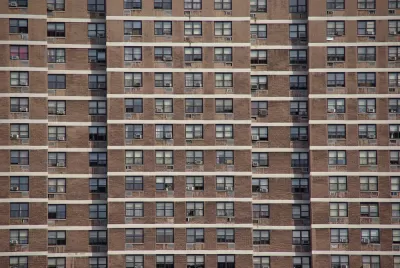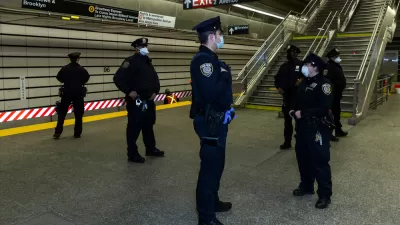Conceived as a stop-gap measure, New York City's cluster site program essentially pays landlords to house homeless people. Now, Mayor de Blasio wants to convert some of those sites directly into affordable units.

Legal obligations require New York to house some of its homeless population, resulting in so-called "cluster sites" in private apartment buildings, with the city footing the bill. The shelter program has been controversial, attracting criticism for its costs, hazards to tenants, and general unsustainability.
However, Nikita Stewart writes, "Under Mayor Bill de Blasio, the city's reliance on the cluster sites has grown along with the rise in homelessness, which has arguably been the biggest failure of his tenure."
Under De Blasio's new plan, announced in December, "the city would use public financing to help nonprofits buy roughly a third of the apartments currently used for the homeless, and then convert the apartments into affordable units, helping the mayor fulfill two goals: lowering homelessness and adding to the city’s affordable housing stock." If landlords refuse to cooperate, eminent domain will apparently be an option.
In the article, Stewart discusses how de Blasio's policy decisions may have contributed to the problem, especially his early reluctance to open new homeless shelters. At the same time, a 2015 report found that cluster site landlords often overcharge the city with impunity. "The lucrative circumstances sometimes led landlords to drive out residents who were not homeless just so they could collect the larger payments from the city."
FULL STORY: De Blasio Seeks to Turn Homeless ‘Cluster Sites’ Into Affordable Housing

Planetizen Federal Action Tracker
A weekly monitor of how Trump’s orders and actions are impacting planners and planning in America.

Restaurant Patios Were a Pandemic Win — Why Were They so Hard to Keep?
Social distancing requirements and changes in travel patterns prompted cities to pilot new uses for street and sidewalk space. Then it got complicated.

Map: Where Senate Republicans Want to Sell Your Public Lands
For public land advocates, the Senate Republicans’ proposal to sell millions of acres of public land in the West is “the biggest fight of their careers.”

Maui's Vacation Rental Debate Turns Ugly
Verbal attacks, misinformation campaigns and fistfights plague a high-stakes debate to convert thousands of vacation rentals into long-term housing.

San Francisco Suspends Traffic Calming Amidst Record Deaths
Citing “a challenging fiscal landscape,” the city will cease the program on the heels of 42 traffic deaths, including 24 pedestrians.

California Homeless Arrests, Citations Spike After Ruling
An investigation reveals that anti-homeless actions increased up to 500% after Grants Pass v. Johnson — even in cities claiming no policy change.
Urban Design for Planners 1: Software Tools
This six-course series explores essential urban design concepts using open source software and equips planners with the tools they need to participate fully in the urban design process.
Planning for Universal Design
Learn the tools for implementing Universal Design in planning regulations.
Heyer Gruel & Associates PA
JM Goldson LLC
Custer County Colorado
City of Camden Redevelopment Agency
City of Astoria
Transportation Research & Education Center (TREC) at Portland State University
Camden Redevelopment Agency
City of Claremont
Municipality of Princeton (NJ)




























